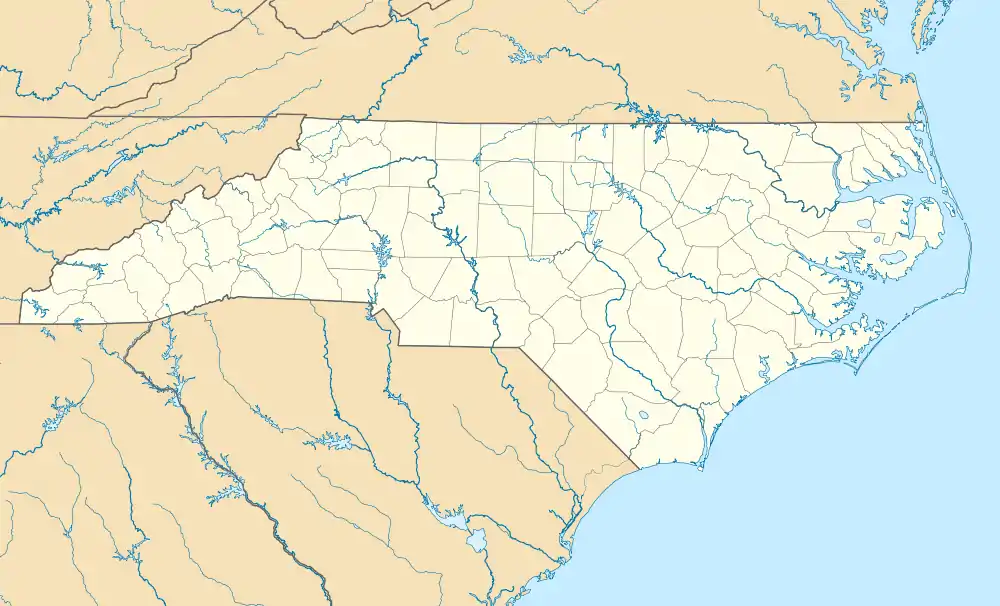Oakwood Historic District | |
 Oakwood Confederate Cemetery | |
  | |
| Location | Roughly bounded by N. Boundary, Person, Jones, and Linden Sts., and Oakwood Cemetery, Raleigh, North Carolina |
|---|---|
| Coordinates | 35°47′04″N 78°37′24″W / 35.78444°N 78.62333°W |
| Area | 190 acres (77 ha) |
| Architect | Briggs, T.H; Et al. |
| Architectural style | Second Empire, Queen Anne, Classical Revival |
| NRHP reference No. | 74001380[1] (original) 87001787 (increase 1) 87002235 (increase 2) 88003044 (increase 3) |
| Significant dates | |
| Added to NRHP | June 25, 1974 |
| Boundary increases | October 21, 1987 January 6, 1988 January 9, 1989 |
Historic Oakwood is a neighborhood in downtown Raleigh, North Carolina, United States, on the National Register of Historic Places, and known for its Historic Oakwood Cemetery, its many Victorian houses and its location close to the Mordecai Plantation Manor. Located near the State Capitol and St. Augustine's Chapel, during the 19th century Historic Oakwood was home to prominent members of Raleigh's society. It is North Carolina's largest, intact 19th Century residential neighborhood[2] and Raleigh's earliest white middle-class suburb. Unlike later suburbs, it developed lot-by-lot over time, instead of by platted sections. Its Victorian-era architectural styles include Second Empire, Queen Anne, and Italianate. Later infill brought the bungalow, the American Foursquare, American Craftsman style, and the Minimal Traditional house to the area.[3][4][5][6]
Oakwood is also known for its Christmas Candlelight Tour, which opens private historic residences to the public, and the Garden Tour, which allows the public to see the vast gardens worked on by the Oakwood Gardening Club.[7]
Oakwood was listed on the National Register of Historic Places in 1974, with additions made in 1987, 1988, and 1989.[1] It is also one of six local historic overlay districts (HOD). Several Oakwood residences are also individually recognized as Local Historic Landmarks.
Gallery
 corner of Person St and Jones St
corner of Person St and Jones St
See also
References
- 1 2 "National Register Information System". National Register of Historic Places. National Park Service. July 9, 2010.
- ↑ "Historic Oakwood". Historic Oakwood. Retrieved October 3, 2019.
- ↑ Survey and Planning Unit Staff (May 1974). "Oakwood Historic District" (pdf). National Register of Historic Places - Nomination and Inventory. North Carolina State Historic Preservation Office. Retrieved June 1, 2015.
- ↑ David R. Black (June 1987). "Linden Avenue Amendment to Oakwood Historic District" (pdf). National Register of Historic Places - Nomination and Inventory. North Carolina State Historic Preservation Office. Retrieved June 1, 2015.
- ↑ Allison H. and David R. Black (May 1988). "Oakwood North Amendment to Oakwood Historic District" (pdf). National Register of Historic Places - Nomination and Inventory. North Carolina State Historic Preservation Office. Retrieved June 1, 2015.
- ↑ David R. Black (August 1987). "Oakwood South Amendment to Oakwood Historic District" (pdf). National Register of Historic Places - Nomination and Inventory. North Carolina State Historic Preservation Office. Retrieved June 1, 2015.
- ↑ "Welcome". The Society for the Preservation of Historic Oakwood.

